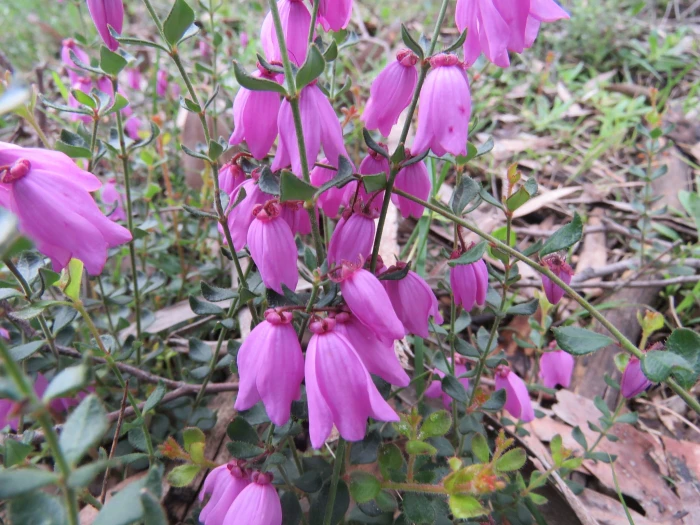Pink Bells
(Tetratheca ciliata)
Pink Bells (Tetratheca ciliata)
/
/

Elspeth Swan
CC BY 4.0
Image By:
Elspeth Swan
Recorded By:
Copyright:
CC BY 4.0
Copyright Notice:
Photo by: Elspeth Swan | License Type: CC BY 4.0 | License URL: http://creativecommons.org/licenses/by/4.0/ | Rights Holder: Elspeth Swan | Publisher: iNaturalist | Date Created: 2020-09-23T15:21:32-07:00 |

























Estimated Native Range
Climate Requirements for Loma Linda, California
| This Plant | Your Site | Plant Suitability for Your Location | ||
|---|---|---|---|---|
| • Precipitation | 8" - 78" | 13" | Your precipitation may be insufficient for this plant. Irrigate N" / year. | Irrigate N" / year |
| • High Temp. | 63°F - 93°F | 95°F | Your summers may be too hot for this plant. | Too hot |
| • Low Temp. | 19°F - 47°F | 40°F | Your winter temperatures are normal for this plant | Excellent |
This plant should grow well at your location with about N inches per year (Y minutes per month) of irrigation.
Summary
Tetratheca ciliata, commonly known as Pink Bells, is a small, evergreen shrub endemic to the open woodlands, heathlands, and forest margins of southern Australia. It typically grows up to 3 feet in height and has a sprawling habit with slender, arching branches. The plant is notable for its deep lilac-pink, bell-shaped flowers that bloom profusely from October to November, attracting pollinators such as bees. The flowers are quite showy, making it a desirable species for ornamental use.
Pink Bells is appreciated for its vibrant floral display and its ability to thrive in a variety of conditions, making it a versatile choice for gardeners. It is often used in rockeries, native plant gardens, and as a border plant. In cultivation, Tetratheca ciliata requires well-drained soils, preferably acidic to neutral, and it can tolerate both full sun and part shade. While it is relatively low-maintenance, it benefits from occasional pruning to maintain a compact form and encourage flowering. There are no major disease issues, but it can be sensitive to root disturbance. Gardeners should be aware that it does not transplant well, so it is best to choose a suitable location from the outset.CC BY-SA 4.0
Pink Bells is appreciated for its vibrant floral display and its ability to thrive in a variety of conditions, making it a versatile choice for gardeners. It is often used in rockeries, native plant gardens, and as a border plant. In cultivation, Tetratheca ciliata requires well-drained soils, preferably acidic to neutral, and it can tolerate both full sun and part shade. While it is relatively low-maintenance, it benefits from occasional pruning to maintain a compact form and encourage flowering. There are no major disease issues, but it can be sensitive to root disturbance. Gardeners should be aware that it does not transplant well, so it is best to choose a suitable location from the outset.CC BY-SA 4.0
Plant Description
- Plant Type: Shrub
- Height: 1-2 feet
- Width: 1-2 feet
- Growth Rate: Moderate
- Flower Color: Pink, Purple
- Flowering Season: Spring, Summer
- Leaf Retention: Evergreen
Growth Requirements
- Sun: Full Sun, Part Shade
- Water: Medium
- Drainage: Medium, Fast
Common Uses
Border Plant, Butterfly Garden, Low Maintenance, Rock Garden, Showy Flowers
Natural Habitat
endemic to the open woodlands, heathlands, and forest margins of southern Australia
Other Names
Common Names: Pink Bells
Scientific Names: Tetratheca ciliata, Tetratheca ciliata var. alba, Tetratheca ciliata var. alba, Tetratheca ciliata var. glabra, Tetratheca ciliata var. longipedunculata
GBIF Accepted Name: Tetratheca ciliata